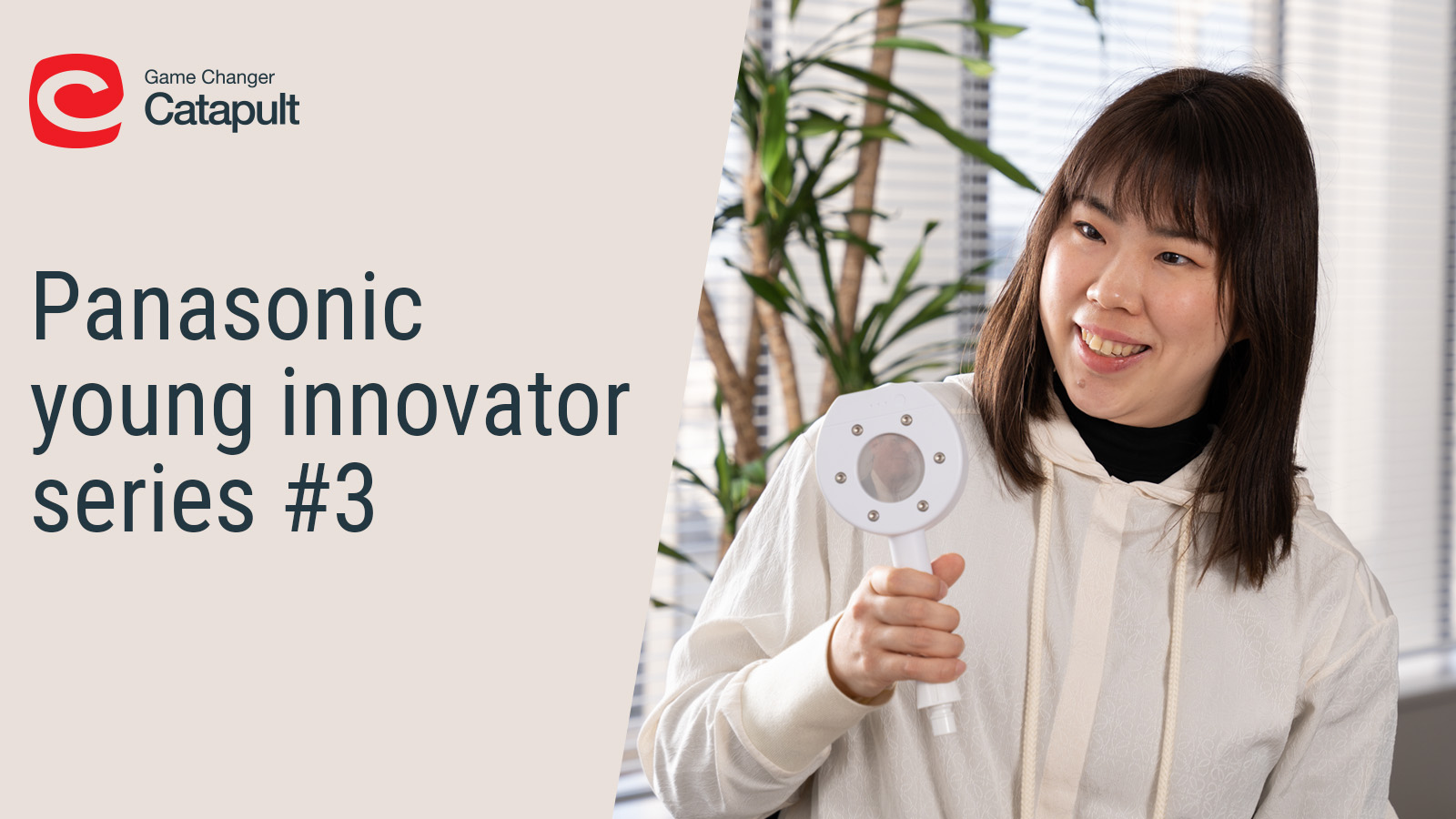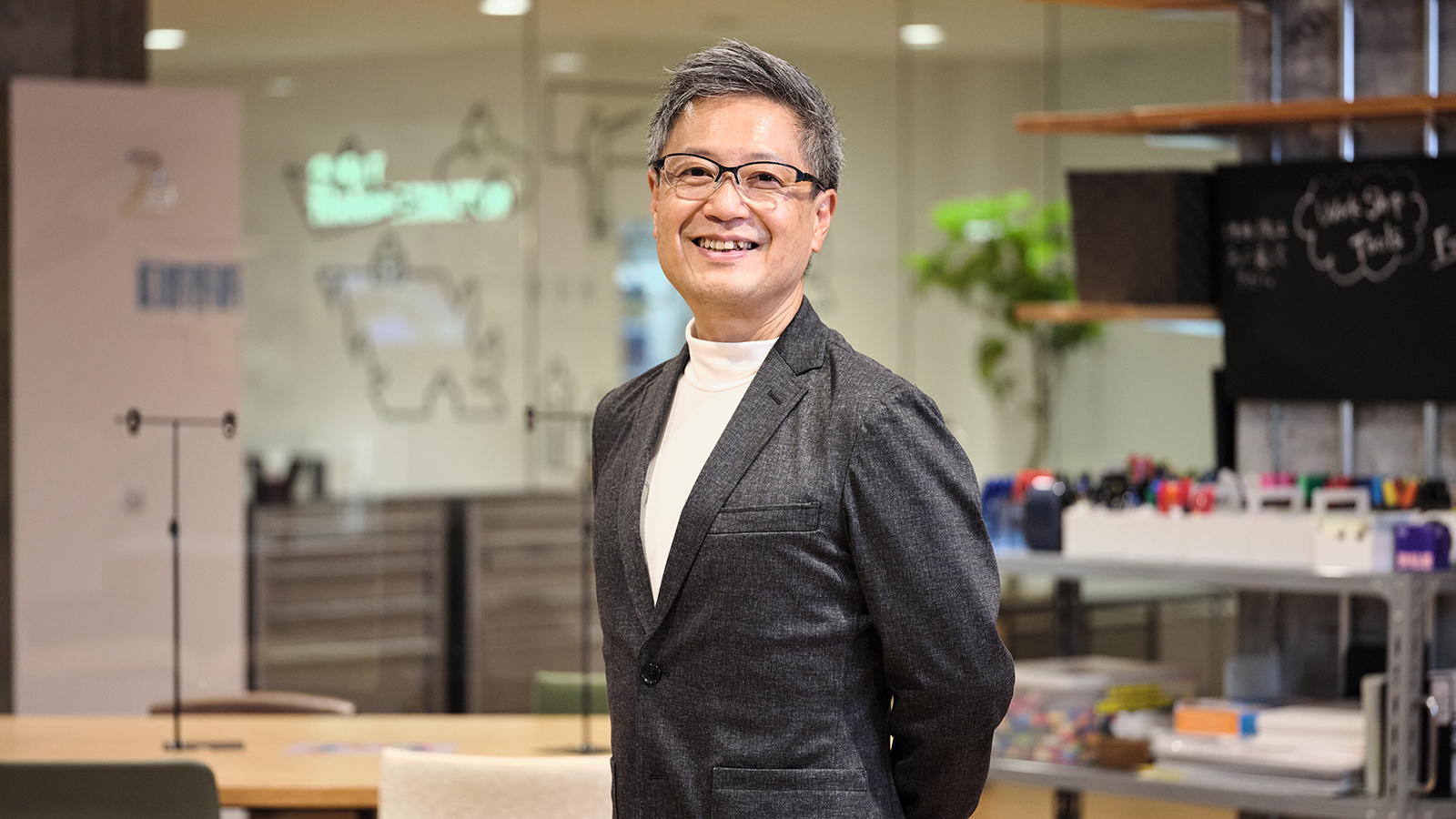
Mar 14, 2023
- Products & Solutions
- Feature Story
- Home & Personal Solution
- Operating company
- Diversity Equity & Inclusion (DEI)

Since founder Konosuke Matsushita registered an improved socket in 1916, Panasonic Holdings, Inc. has actively promoted the development of intellectual property in Japan and overseas, and currently holds more than 100,000 pieces of intellectual property. The company’s Intellectual Property Department has been looking for ways to promote solutions to social issues by functioning as a “bridge for intangible assets.” General Manager of the department Yoshiaki Tokuda explains the organization’s new objectives and vision for the future.
“In a nutshell, our role is to serve as a ‘bridge for intangible assets.’ The seven operating companies are managed independently, but their intellectual property is shared by the entire group,” says Tokuda. “The IP Department considers how to best use these assets across the Group, and works to create a framework for doing so.”
The assets handled by the IP Department have expanded to include not only patents and trademarks, but also data and the specialized areas have become more diverse and sophisticated. The regions handled have also grown to include India and Southeast Asia.
“The Panasonic Group is cultivating the concepts of ‘expanding (the domain)’ and ‘consolidating (the direction),’ which means that even though we may be working independently to expand our respective domains, collectively we are always moving in the same direction,” explains Tokuda. “The IP Department is being called upon to deepen its expertise and respond to a wider variety of cases.”
During a review of the mid-term plan, younger colleagues said they wanted something that described the department’s value as an organization and proposed the idea of a Purpose Statement. “Behind this idea was the belief that as social issues become increasingly more complex, companies must be willing to proactively take up the challenge of resolving them,” says Tokuda. “I understood immediately that what they were talking about was aligned to the concept of ‘expanding while consolidating.’”

The Purpose Statement was drafted to reflect three key aspects of the department’s work. First was its scope, which has been expanded to include data and information by changing the designation from “intellectual property” to “intangible assets.”
Second was its activity, represented by the term “to circulate.” Intangible assets are like blood—indispensable to healthy economic activity and a healthy society and only effective when circulated where they are needed and in the required quantities. If the supply is insufficient, more must be introduced from outside.
Third was the desired outcome. “Our ultimate goal is to make the world happier,” says Tokuda. “We believe it is essential not only to contribute to our business, but also to try to solve problems arising from social issues.”

“Discussions around how to structure the provision of Panasonic Group’s intangible assets and the introduction of technologies started about seven years ago, and since then we’ve connected with many local research institutes and startups,” says Tokuda. “Our ability to function as a matching platform has allowed us to accumulate significant know-how and deep personal networks, leading to the creation of new businesses.”
The IP Department’s initiative began with the desire to “connect needs and seeds” within the Panasonic Group, where it is often difficult to apply technologies across business companies due to the large number of people and locations in their respective engineering departments.
When developing new products on a market-in basis, it has often been difficult for product and business planners to see what kinds of technologies the company had, or for engineers to know if their efforts matched the actual needs of society.
“To solve these problems, we wanted a system that indexes technical information in terms that are easy to grasp for non-technical people—sales and planning teams, for example—and would allow them to search for technical data and historical information on people who are knowledgeable about technology and intellectual property and the people in charge,” explains Tokuda. “It’s only been a year since launch, and the system still needs to be updated to improve search function accuracy, but we’re confident that it will become an extremely useful tool.”
From the IP Department’s perspective, if it becomes easier for engineers to share knowledge with each other and for sales and planning staff to consult and mediate with engineers based on patent information that explains who invented what, when they invented it, and what kind of invention it is, then the use of such information as intangible assets will also increase. In the future, the department would like to use accumulated search logs to visualize the company’s technological needs, and to utilize them in its R&D roadmap.

Solving environmental issues requires fundamentally changing the social structure and introducing different infrastructure and new technologies, and this, in turn, requires companies at various levels to cooperate with each other and bring together their intangible assets.
Accelerating the creation of new innovations demands a system that can evaluate the intangible assets and provide incentives. Calculating value will also be a challenge, but if the method can be standardized, it will be possible to sustainably induce the bringing together of intangible assets.
“Our ultimate goal is to use our intangible assets to attract a variety of companies, establish various businesses, and give back to the environment and to people’s lives while directly linking these activities to our earnings,” says Tokuda. “We also want to create a mechanism for evaluating our contribution to carbon reduction to accelerate the introduction of new innovations that promote decarbonization.”
The creation of new businesses and industries often depends on collaboration among multiple parties, giving rise to the concept of open innovation. Given this new reality, a new perspective on intangible assets is required—moving beyond practical application to achieve “circulation.” “From this perspective,” says Tokuda, “we believe it’s necessary to have a challenging mindset—one that can transform our existing business activities into ‘activities focused on solving social issues’ in the future.”
“Looking toward the future, what the Panasonic Group requires is a redesign perspective,” says Tokuda. “We will redesign from ‘intellectual property’ to ‘intangible assets,’ and also redesign our activities themselves. From there, it would be fun to redesign our internal development methods and social systems.
“The role of the IP Department is to ‘connect through intangible assets.’ We would like to continue to use our intangible assets to create diverse connections inside and outside the company, including startups and venture companies working on social issues.”
The content in this website is accurate at the time of publication but may be subject to change without notice.
Please note therefore that these documents may not always contain the most up-to-date information.
Please note that German, French and Chinese versions are machine translations, so the quality and accuracy may vary.